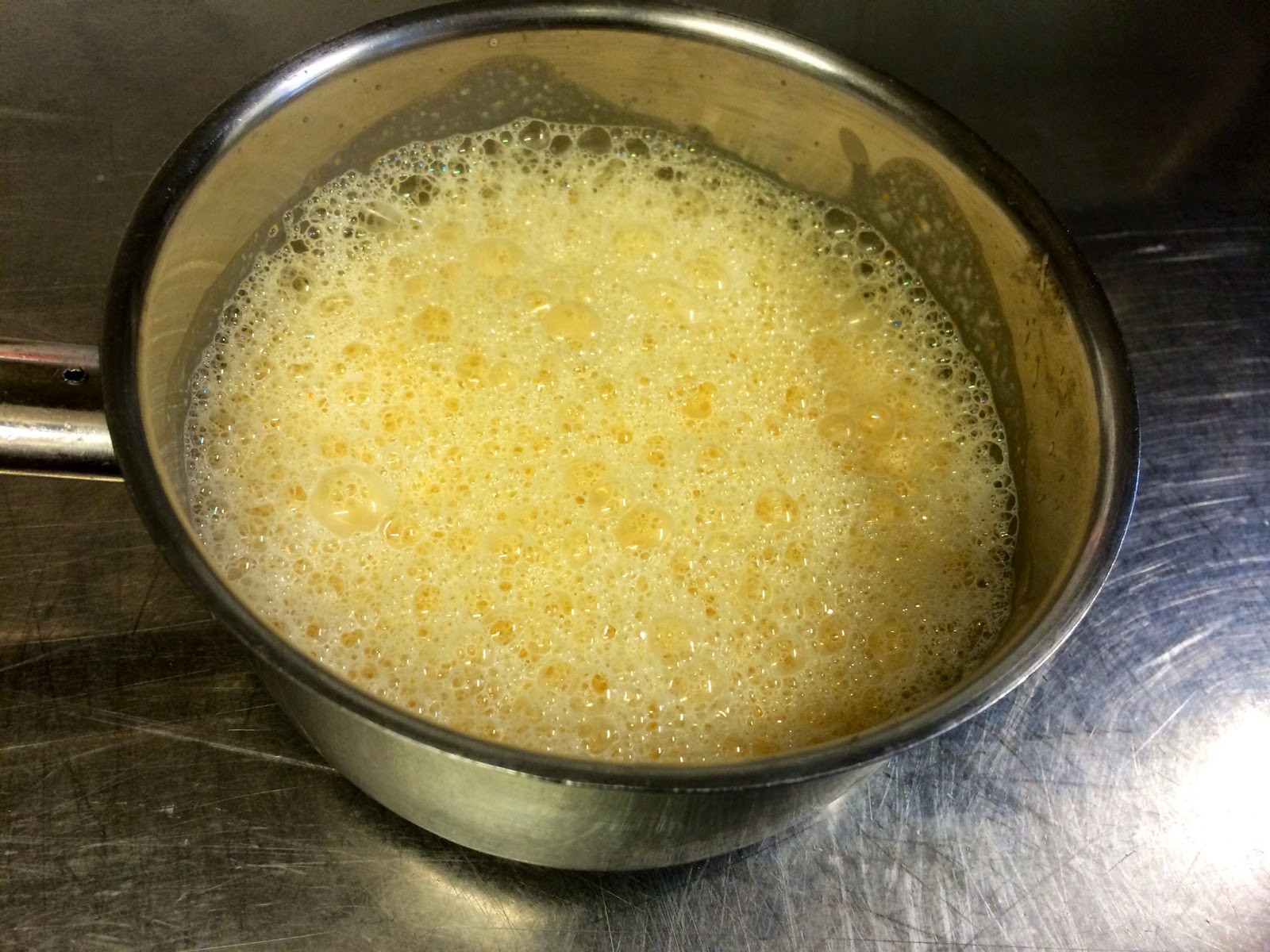550g pasta flour
4 eggs
6 yolks
Pinch salt
15ml saffron water
15ml olive oil
500ml duck fat
50g truffle pecorino
30g butter
Salt
Lemon zest
First season your rabbit legs and place into the duck fat in a heavy bottomed oven dish and confit at 85*c for 8 hours. If you don't have 8 hours then you can do it while your at work, don't worry at that heat they can't burn. In the kitchen, we prefer to do them over night so they're ready to pick as soon as we start in the morning. You'll know when they're ready as the meat just falls off the bone without any force. Pick out the bones & cartilage and discard. This meat holds a little longer than meat thats braised or roasted, so any extra can be kept to have with your lunch the next day.
For the pasta dough you'll need to pile all the flour onto a spacious work bench and make a well in the middle to hold the liquids. Mix all the remaining ingredients together and place into your flour well. With a pastry cutter (or your hands) start mixing the flour into the liquid to produce a rough dough, this should take around 5 minutes. Start to kneed the dough like a bread dough until it is fully incorporated, don't over work it tho. Wrap in cling film and rest in the fridge for an hour.
When rested, roll out your dough slightly with a rolling pin, Start on number 10 on your pasta machine and pass through the dough, this recipe is decent enough so its not too wet, or dry, which means you wont need to play about with loads of flour. Every time you put the pasta through, turn it over and place the opposite end into the machine so your producing and even size pasta. The format goes as follows:

10: twice
9: twice
8: twice
Fold in two and repeat 8 twice
7: twice
6: twice
5: twice
4: twice
3: twice
We only go as far down as 3 because we want a bit of body to our pasta, if you go much further then the sheets become too thin to work with and often break.
Flour your pasta sheets, fold them up and cut into desired strips. We're doing pappardelle which is the width if your thumb but you could do it as wide as you like. Boil a pot of water and throw in a small handful of salt then blanch your pasta for 1 minute then refresh in ice cold water you can of course just heat the pasta from dry when your crating the dish but I feel this gives it a longer yield if you're wanting to keep some in the fridge for later.
In a hot pan, place in your rabbit meat, butter and a drop of the pasta water to make a sauce, not too much tho as its salty. Add a small amount of lemon zest and some Pecorino, the cheese is important, as most of the flavour derives from its use. Heat the pasta for 2 minutes and mix with your rabbit in the pan. Finally garnish with grated pecorino and a small pinch of herbs. We are using mizuna in this dish but it can go with chive, tarragon or parsley.
Find us on Facebook or @thechefslarder








.JPG)
.JPG)
